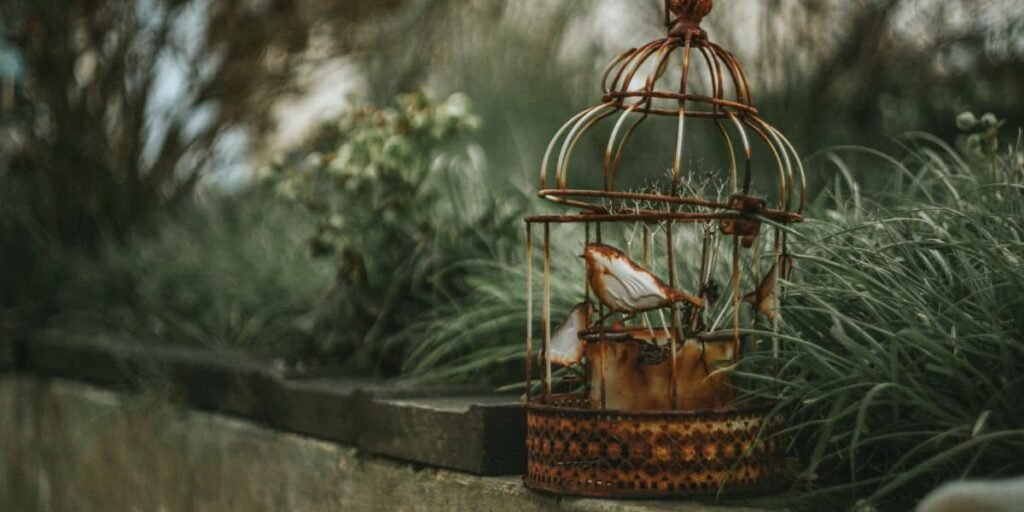Maya Angelou’s powerful poem Caged Bird remains an iconic work that explores themes of freedom, oppression, and the relentless human spirit. Written in 1969, it offers a vivid and poignant metaphor for those who find themselves confined by social, political, and personal struggles. Through the imagery of two contrasting birds—one free and the other trapped—Angelou delves into the emotional and psychological toll of inequality while highlighting the universal yearning for liberation.
In this article, we will break down the symbolism, themes, and literary devices used in Caged Bird to give you a deeper understanding of its significance. Whether you’re an educator, student, or poetry enthusiast, this analysis will help you explore the depth of Angelou’s words, while connecting them to contemporary issues of freedom and justice.
Understanding the Poem: The Contrast Between the Free and the Caged Bird
The poem centers around the stark contrast between two birds: the free bird, symbolizing those who experience liberty and privilege, and the caged bird, representing those whose freedom is restricted or denied. Through these two birds, Angelou explores the powerful emotions tied to oppression, yearning, and the resilience of the human spirit.
- The Free Bird: A Symbol of Privilege and Liberation
- The first stanza introduces a free bird that “leaps on the back of the wind” and “floats downstream till the current ends.” This bird represents individuals or groups who enjoy freedom and opportunities without barriers. The free bird “dares to claim the sky,” a vivid metaphor for asserting dominance and ownership over one’s destiny.
- The Caged Bird: A Symbol of Oppression and Hope
- The second stanza contrasts the free bird with the caged bird, which “stalks down his narrow cage.” The caged bird’s wings are “clipped,” and its feet are “tied,” symbolizing oppression, confinement, and a loss of agency. Despite these limitations, the caged bird “opens his throat to sing,” an act of defiance and resilience. Through this, Angelou illustrates that even in the face of despair, the human spirit can find ways to express its longing for freedom.
- The Song of the Caged Bird: A Call for Freedom
- The recurring image of the caged bird singing with a “fearful trill” is central to the poem’s message. The bird’s song represents the desire for liberation—both a cry of anguish and a beacon of hope. The caged bird’s song resonates across distances, heard “on the distant hill,” showing that the yearning for freedom is universal and has the power to echo through time and space. The bird sings “of freedom,” suggesting that even in captivity, the dream of liberation cannot be silenced.
- The Grave of Dreams and the Nightmare Scream
- In the final stanza, Angelou deepens the emotional weight of the poem. The caged bird “stands on the grave of dreams,” implying that the bird’s potential, like the dreams of the oppressed, is being buried by societal forces. The “nightmare scream” reflects the painful reality of being denied freedom. Despite these bleak realities, the caged bird continues to sing—symbolizing the resilience of the human spirit, which refuses to be silenced.
Literary Devices and Techniques in “Caged Bird”
Angelou’s Caged Bird is rich in literary devices, each contributing to the depth and emotional impact of the poem.
- Metaphor: The entire poem is a metaphor for freedom and oppression. The free bird represents liberty, while the caged bird symbolizes those who face inequality or restriction. Through this metaphor, Angelou conveys the emotional and psychological toll of being oppressed.
- Imagery: Angelou uses vivid imagery to make the reader feel the difference between the free and the caged bird’s experiences. The description of the free bird “floating downstream” and “dipping his wing in the orange sun rays” evokes feelings of ease, peace, and freedom, while the caged bird’s confinement is represented by “narrow cage,” “clipped wings,” and “tied feet.”
- Symbolism: The birds in the poem symbolize two opposing states: freedom and captivity. The caged bird’s song becomes a symbol of hope, longing, and defiance against oppression.
- Repetition: The phrase “The caged bird sings” is repeated throughout the poem, emphasizing the persistence of the caged bird’s voice. This repetition underscores the resilience of those who are oppressed and their continuous struggle for freedom.
- Tone: The tone of the poem shifts from one of peaceful freedom to one of sorrow and longing as the caged bird’s plight is revealed. However, the resilience and hope conveyed through the caged bird’s song give the poem an overall tone of defiance and strength.
The Message of the Poem: A Universal Cry for Freedom
Maya Angelou’s “Caged Bird” is not just a reflection of the oppression experienced by African Americans in the 1960s; it is a universal cry for freedom and justice. The poem speaks to anyone who has felt restricted or denied their basic human rights. It is an anthem for the marginalized, the oppressed, and the voiceless, urging them to continue singing their song of freedom, no matter the obstacles they face.
Angelou’s words resonate deeply with contemporary struggles for civil rights, social justice, and equality. Whether it is the fight for racial equality, gender equality, or freedom from political oppression, Caged Bird serves as a reminder that the longing for freedom transcends time and place.
Key Takeaways from “Caged Bird”
- Freedom and Oppression: The poem highlights the disparity between the privileged and the oppressed, showing the physical, emotional, and psychological toll of confinement and inequality.
- Hope and Resilience: Despite the caged bird’s limitations, it continues to sing, symbolizing the unyielding human spirit and its quest for freedom.
- Universal Appeal: While rooted in the African American experience, the poem’s themes of yearning for liberty and justice are relevant to all people who struggle against oppression.
Conclusion
Maya Angelou’s Caged Bird is a timeless work that captures the essence of the human condition—the tension between freedom and oppression, the pain of longing for a better world, and the unbreakable spirit that persists in the face of adversity. Through its vivid imagery, symbolism, and powerful metaphors, Angelou’s poem continues to inspire and resonate with readers, urging them to find their own voices and keep singing their songs of freedom.
Objective Questions and Answers on Caged Bird by Maya Angelou
- What is the main theme of Caged Bird?
- A) Love
- B) Freedom vs. oppression
- C) Friendship
- D) Nature
- Answer: B) Freedom vs. oppression
- What does the free bird represent in the poem?
- A) The oppressed
- B) The privileged
- C) Nature
- D) The caged bird’s dream
- Answer: B) The privileged
- What is the caged bird’s song a metaphor for?
- A) Happiness
- B) Yearning for freedom
- C) Celebration
- D) Anger
- Answer: B) Yearning for freedom
- How are the caged bird’s wings described?
- A) Strong and free
- B) Clipped and tied
- C) Dull and dark
- D) Fragile and broken
- Answer: B) Clipped and tied
- What does the free bird think of?
- A) The caged bird
- B) The past
- C) Another breeze
- D) The caged bird’s song
- Answer: C) Another breeze
- Where is the caged bird’s song heard?
- A) In the cage
- B) On the distant hill
- C) In the trees
- D) Across the ocean
- Answer: B) On the distant hill
- What does the caged bird symbolize in the poem?
- A) Nature
- B) Hope
- C) Oppression
- D) Joy
- Answer: C) Oppression
- What does the phrase “stands on the grave of dreams” suggest?
- A) The bird is happy
- B) The bird has lost hope
- C) The bird is free
- D) The bird is dreaming
- Answer: B) The bird has lost hope
- Which word best describes the tone of the poem?
- A) Lighthearted
- B) Defiant
- C) Sarcastic
- D) Indifferent
- Answer: B) Defiant
- What literary device is used in the line “the caged bird sings with a fearful trill”?
- A) Simile
- B) Hyperbole
- C) Personification
- D) Alliteration
- Answer: C) Personification
- What does the free bird name as its own?
- A) The sky
- B) The sea
- C) The wind
- D) The forest
- Answer: A) The sky
- What does the “narrow cage” represent?
- A) The bird’s home
- B) A lack of freedom
- C) The bird’s safety
- D) A place of peace
- Answer: B) A lack of freedom
- What is the effect of repetition in the line “The caged bird sings”?
- A) To emphasize the bird’s song of hope
- B) To show the bird’s anger
- C) To show the bird’s sadness
- D) To make the poem longer
- Answer: A) To emphasize the bird’s song of hope
- What does the “nightmare scream” symbolize?
- A) The bird’s song
- B) The bird’s dream
- C) The anguish of oppression
- D) The freedom of the bird
- Answer: C) The anguish of oppression
- What is suggested by the “fat worms waiting on a dawn bright lawn”?
- A) The abundance of food
- B) The freedom the free bird enjoys
- C) The safety of the free bird’s world
- D) The sadness of the caged bird
- Answer: B) The freedom the free bird enjoys
- What is the main message of the poem?
- A) Freedom is only for the lucky
- B) Oppression can be overcome through hope and defiance
- C) Birds should not be kept in cages
- D) The free bird is happier than the caged bird
- Answer: B) Oppression can be overcome through hope and defiance
- What does the caged bird’s song express?
- A) Regret
- B) Anger
- C) Hope for freedom
- D) Joy
- Answer: C) Hope for freedom
- Which element is NOT part of the caged bird’s confinement?
- A) Narrow cage
- B) Tied feet
- C) Clipped wings
- D) Free sky
- Answer: D) Free sky
- How does the free bird feel about the sky?
- A) It fears the sky
- B) It claims the sky as its own
- C) It avoids the sky
- D) It is indifferent to the sky
- Answer: B) It claims the sky as its own
- What does the caged bird’s “fearful trill” represent?
- A) The bird’s fear of the cage
- B) The bird’s hope for freedom
- C) The bird’s anger
- D) The bird’s sadness
- Answer: B) The bird’s hope for freedom

